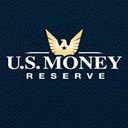Monetary Policy: Would We Still Recognize the New Normal?
By Angela Koch, CEO of U.S. Money Reserve
The Fed is currently in the process of attempting to “normalize” monetary policy. What does this mean exactly?
Monetary policy is how central banks across the world manage their money supply, and this includes setting interest rates and controlling the availability of credit.
During normal economic cycles, the U.S. Federal Reserve’s stated goal is to promote a stable inflation rate and long-term growth. But Fed policy can also be used as a macroeconomic tool during periods of economic volatility or crisis.
In response to the Great Recession, the Fed cut its target interest rate to near zero and engaged in an unprecedented program of large-scale asset purchases called Quantitative Easing (QE). QE entailed the buying of Treasury bonds and mortgage-backed securities with electronic cash in an attempt to add liquidity to the monetary system. There were three rounds of Quantitative Easing (QE 1, QE 2, and QE 3) extending from 2008 to 2014 — which quadrupled the Fed’s balance sheet.
And now in an attempt to reclaim “normal,” the Fed is removing the monetary accommodations put in place during the Great Recession by raising short-term rates and unwinding the more than $4 trillion in assets that are still on the books. Fiscal tightening carries significant risk, however, and that could jeopardize our current economic stability.
And what’s perhaps the most vexing of all is the fact that we’re in uncharted territory. No major economy has seen numbers like this, and not one has successfully reversed the economic slack, easy credit, and massive balances of a seismic global downturn. The Bank of Japan actually embarked on QE long before it had a name. They’ve repeatedly tried to “normalize” — and so far have failed.
In the U.S., interest rates are still at historic lows, and the federal balance sheet is still at historic highs. And at the current pace of rate increases and asset reduction, normalization could take decades. What will we call it then?
Perhaps it’s all part of the Fed’s plan. If monetary policy is tightened too fast, it can erode growth. If it is tightened too slowly, it can fuel bubbles. And regardless of the pace, the fallout will invariably impact mortgage rates, credit availability, consumer prices, investments, and the financial markets.
Logic clearly suggests that if massive amounts of liquidity helped pull the economy out of the abyss, then taking it all away could trigger a slide back into the darkness. And as we sit in the fallout of this massive monetary experiment, we’ve completely lost sight of what normal is.
There is only a long and winding road leading to a place we’ve never been before — and an overwhelming urge to find safety and security before we round the next corner.
